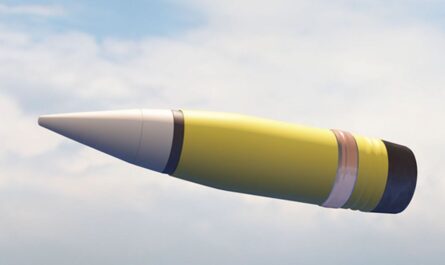A groundbreaking milestone has been achieved in the world of power generation with the completion of the Supercritical Transformational Electric Power (STEP) pilot plant in San Antonio, Texas. The project, carried out by Southwest Research Institute (SwRI), GTI Energy, GE Vernova, and the U.S. Department of Energy, aims to demonstrate the viability of using supercritical carbon dioxide (CO2) as a medium for power generation.
Supercritical carbon dioxide offers several advantages over traditional steam turbines, which currently dominate the power generation industry. Not only is supercritical CO2 significantly cheaper, but it is also 10% more efficient compared to water as a medium. Additionally, the smaller size of the turbines – approximately 10 times smaller than traditional steam turbines – allows for reduced capital costs and less land utilization for power plants.
The crown jewel of the STEP pilot plant is the world’s first supercritical carbon dioxide turbine. Despite its small size, roughly equivalent to a desk, this 10-megawatt turbine has the potential to power around 10,000 homes. The turbine’s compact design and innovative use of supercritical CO2 technology make it a potential game-changer in the energy industry.
Supercritical CO2 occurs when carbon dioxide is exposed to temperatures above 31 °C (88 °F) and pressures of around 74 bar (1,070 psi). At this point, the CO2 stops behaving as a gas or a liquid and exhibits properties of a gas with the density of a liquid. Even small changes in temperature can lead to significant changes in density.
Unlike water, which requires much higher temperatures and pressures to reach a supercritical state, CO2’s unique properties make it an ideal medium for energy extraction in a closed-loop system. General Electric recognized this potential in 2016 and began constructing a pilot plant to prove the viability of supercritical CO2 turbines. The goal is to achieve 10 MW at an extraction efficiency of 50%, surpassing current steam turbines that operate in the mid-40s. Moreover, the smaller size and faster startup time of CO2 turbines offer additional advantages in terms of response time and emissions reduction.
Once proven successful, the technology can be scaled up to utility-relevant sizes, potentially replacing steam turbines in various power plants, including fossil-fueled plants, nuclear plants, geothermal plants, and concentrated solar plants. The versatility and efficiency of supercritical CO2 turbines have the potential to revolutionize the power generation industry and pave the way for a more sustainable and cost-effective energy future.
While there is still work to be done before the pilot plant is commissioned, the consortium expects it to be operational by 2024. Adam Hamilton, President and CEO of SwRI, expressed excitement about the project’s potential and the opportunity to launch a pilot plant that houses groundbreaking technology developed by SwRI.
The completion of the STEP pilot plant marks a significant step forward in power generation innovation. With its potential to reduce costs, increase efficiency, and mitigate environmental impacts, the use of supercritical CO2 turbines could transform the way we generate and consume electricity.
*Note:
1. Source: Coherent Market Insights, Public sources, Desk research
2. We have leveraged AI tools to mine information and compile it




